Step into the vibrant world of the Pansexual Pride Flag, a symbol that goes beyond its colorful fabric to represent the diverse spectrum of attractions within the pansexual community. In this exploration, we’ll uncover the significance of each hue, the beauty of its design, and the profound symbolism encapsulated in the flag. Join us as we celebrate the inclusive nature of pansexuality and the rich tapestry of love that transcends traditional boundaries.

Download the Pansexual Flag as a HR PNG or SVG.
Meaning and Symbolism
The Pansexual Pride Flag serves as a vibrant symbol within the LGBTQ+ community, representing the pansexual identity and fostering inclusivity. Comprising three horizontal stripes, the flag utilizes bold colors to convey the essence of pansexuality and its commitment to embracing a spectrum of attractions.
At its core, pansexuality is a sexual orientation characterized by an attraction to individuals regardless of their gender. The Pansexual Pride Flag, with its distinctive color scheme, stands as a powerful emblem of the diverse range of romantic and emotional connections that pansexual individuals experience. The flag consists of three equal horizontal bands: pink, yellow, and blue.
The choice of colors in the Pansexual Pride Flag is deliberate and holds significance within the LGBTQ+ community. The pink stripe represents attraction to those who identify as female, the blue signifies attraction to those who identify as male, and the yellow represents attraction to individuals across the gender spectrum, including non-binary and genderqueer individuals. This intentional incorporation of colors reinforces the flag’s role in promoting gender equality and recognizing the fluidity of sexual orientation.
As a part of the broader LGBTQ+ Pride movement, the Pansexual Pride Flag aligns itself with the values of diversity, equality, and love. It serves as a testament to the ongoing LGBTQ+ rights movement and contributes to the visibility of pansexuality within the larger community. Whether displayed at LGBTQ Pride events, parades, or as a symbol of solidarity, the Pansexual Pride Flag plays a crucial role in fostering awareness and acceptance.
In essence, the Pansexual Pride Flag is not just a colorful banner; it is a beacon of identity, unity, and the ongoing struggle for LGBTQ+ rights. Its vibrant presence in LGBTQ+ Pride events and its incorporation into the broader rainbow of Pride colors symbolize the inclusivity and strength of the pansexual community within the rich tapestry of LGBTQ+ identities.

History of the Pansexual Pride Flag
The Pansexual Pride Flag, a vibrant symbol of inclusivity within the LGBTQ+ community, has a history steeped in intention and representation. Designed to embody the identity of pansexuality, this distinctive flag serves as a visual expression of the diverse spectrum of attractions that pansexual individuals experience.
The Pansexual Pride Flag was first introduced in 2010 by a grassroots movement within the LGBTQ+ community. The flag’s creation was spurred by the need for a specific symbol that could authentically represent pansexuality, a sexual orientation characterized by attraction to individuals regardless of their gender. The design process involved careful consideration of colors to encapsulate the essence of pansexuality.
The flag itself consists of three horizontal stripes of equal width – pink, yellow, and blue. Each color holds significant meaning, contributing to the overall message of the flag. The pink stripe represents attraction to those who identify as female, the blue stripe symbolizes attraction to those who identify as male, and the yellow stripe signifies attraction to individuals across the gender spectrum, including non-binary and genderqueer individuals.
The Pansexual Pride Flag quickly gained recognition and acceptance within the LGBTQ+ community, becoming an integral part of Pride events, parades, and gatherings worldwide. Its presence serves not only to celebrate pansexuality but also to promote visibility and awareness within the broader spectrum of sexual orientations.
As a testament to the ongoing evolution of LGBTQ+ symbols and identities, the Pansexual Pride Flag continues to play a vital role in fostering a sense of community and belonging. Its history is marked by the collective effort to create a symbol that authentically represents pansexuality, contributing to the rich tapestry of LGBTQ+ pride and activism.

Colors and Their Representation
The colors chosen to represent various pride flags hold deep symbolic meaning, each hue carefully selected to convey specific messages about the identity or cause they represent. In the LGBTQ+ community, including the Pansexual Pride Flag, these colors play a crucial role in fostering visibility, inclusivity, and understanding.
For the Pansexual Pride Flag, the palette is a harmonious blend of pink, yellow, and blue. These colors are not merely aesthetically pleasing but are intentional in their representation of the diverse spectrum of attractions associated with pansexuality. The pink stripe signifies attraction to individuals identifying as female, the blue stripe represents attraction to those identifying as male, and the yellow stripe embraces attraction to individuals across the entire gender spectrum, including those who identify as non-binary or genderqueer.
This thoughtful combination of colors creates a visual language that speaks to the fluidity of sexual orientation and emphasizes the inclusivity inherent in pansexuality. Beyond mere aesthetics, the Pansexual Pride Flag’s color scheme serves as a tool for communication, fostering a sense of belonging and understanding within the LGBTQ+ community.
In the broader context of LGBTQ+ Pride, colors hold significance not only in individual flags but also in the iconic Rainbow Flag, which symbolizes the diversity of the community. The rainbow itself, composed of six colors, represents different aspects of LGBTQ+ life and culture: red for life, orange for healing, yellow for sunlight, green for nature, blue for serenity, and purple for spirit. This inclusive representation underscores the collective strength and unity of the LGBTQ+ community.

What are the RAL or Pantone colors of the Pansexual Pride Flag?
The Pansexual flag doesn’t have official Pantone or RAL specifications, the following approximations can be used:

PINK
Pantone: Rhodamine Red C
RAL: 4010
HEX: #ff218c

YELLOW
Pantone: Yellow C
RAL: 1026
HEX: #ffd800

BLUE
Pantone: 298 C (or Cyan)
RAL: 5012
HEX: #21b1ff
Kindly be aware that the colors mentioned here are approximations, and the exact shades may vary based on factors such as the production method, material, and lighting conditions. For accurate color representation, it is advisable to utilize physical color samples or seek guidance from a professional color-matching service.

Usage and Recognition
Since its creation in 2010, the Pansexual Pride Flag has gained widespread recognition and is now widely used as a symbol of pansexuality and inclusivity within the LGBTQ+ community. Its distinctive design and vibrant colors make it easily distinguishable, contributing to its visibility in various settings, including LGBTQ+ Pride events, parades, and online platforms.
One of the key uses of the Pansexual Pride Flag is in LGBTQ+ Pride events and celebrations. Whether displayed alongside other Pride flags or independently, the flag serves to represent and celebrate the pansexual community. Its presence at such events fosters a sense of unity, allowing individuals to proudly express their pansexual identity and connect with others who share similar experiences.
In addition to physical spaces, the Pansexual Pride Flag has found a prominent place online. Social media platforms, websites, and LGBTQ+ advocacy groups often use the flag to raise awareness, promote inclusivity, and express support for the pansexual community. The flag’s visibility in digital spaces contributes to a broader understanding of pansexuality and encourages discussions about diverse sexual orientations.
The Pansexual Pride Flag’s recognition extends beyond the LGBTQ+ community, with efforts made to educate the general public about its meaning and significance. As a result, the flag has become a symbol not only of pansexuality but also of the broader principles of diversity, equality, and acceptance.
Its widespread usage underscores the importance of having specific symbols that represent the diverse spectrum of sexual orientations within the LGBTQ+ community. The Pansexual Pride Flag stands as a testament to the ongoing progress in LGBTQ+ visibility and representation, contributing to a more inclusive and understanding society.
Related Flags and Symbols:

Rainbow Flag: The universally recognized LGBTQ+ Pride flag, featuring a spectrum of colors, designed by Gilbert Baker.

Transgender Pride Flag: Designed by transgender activist and Navy veteran Monica Helms, it consists of light blue, pink, and white stripes, representing the transgender community.
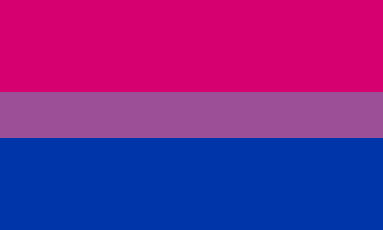
Bisexual Pride Flag: Created by Michael Page, it features three horizontal stripes—pink, purple, and blue—symbolizing attraction to more than one gender.

Non-Binary Pride Flag: Created by Kye Rowan, it features yellow, white, purple, and black stripes, symbolizing genders outside the traditional binary.

Genderqueer Pride Flag: Designed by Marilyn Roxie, it features lavender, white, and dark green stripes, representing genderqueer, non-binary, and genderfluid identities.
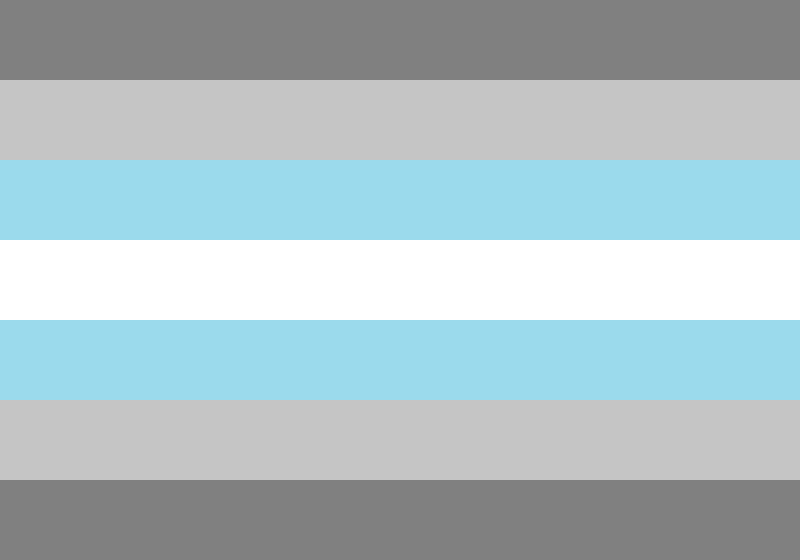
Demiboy Pride Flag: Designed by an anonymous Tumblr user, it consists of light blue, white, and black stripes, representing a partial connection to being male.

Demigirl Pride Flag: Also designed by an anonymous Tumblr user, it features light pink, white, and black stripes, representing a partial connection to being female.
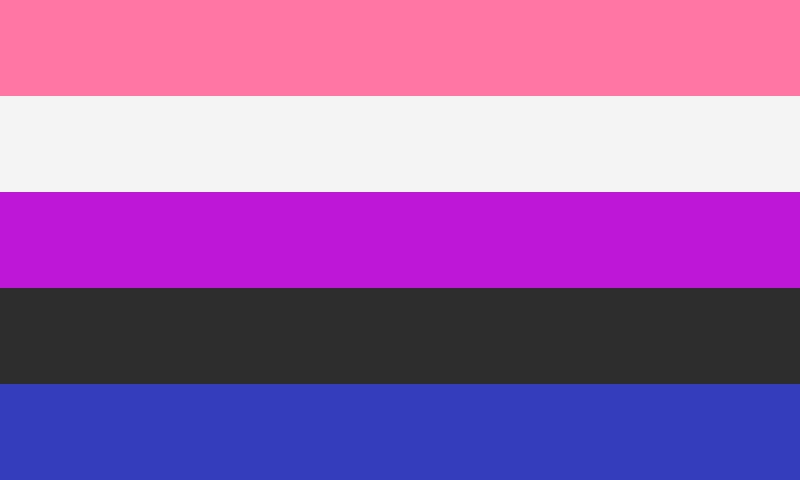
The Genderfluid Flag: designed in 2012 by activist JJ Poole, is a vibrant emblem symbolizing the diverse spectrum of gender identities, with each carefully chosen color representing different facets of the genderfluid experience.

The Omnisexual Flag: Omnisexuality involves attraction to all genders, with preferences varying. Created in 2015, the Omnisexual Pride Flag represents the gender spectrum with light pink and blue for femininity and masculinity, and dark purple for those outside traditional categories..
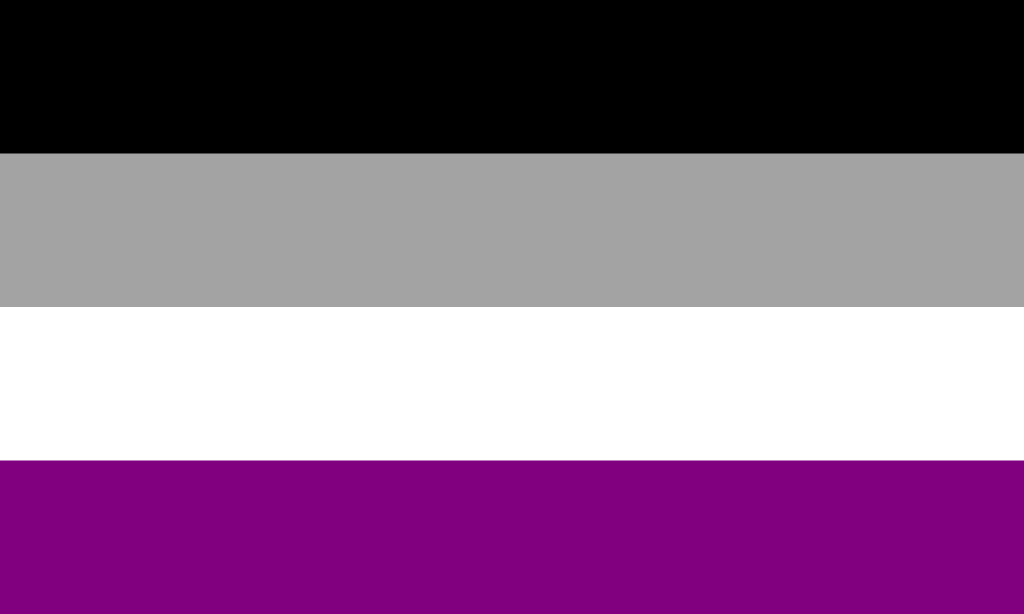
The Asexual Pride Flag:
Crafted in 2010 by StandUp of AVEN, the Asexual Pride Flag symbolizes the asexual community with its four horizontal stripes: black for asexuality, gray for the spectrum, white for sexuality, and purple for diversity. Read more.
Pansexual Community Acceptance and Adoption
The Pansexual Pride Flag has seen widespread acceptance and adoption within the pansexual community, playing a significant role in fostering a sense of identity, unity, and visibility. Since its inception in 2010, the flag has become a powerful symbol that resonates with individuals who identify as pansexual, offering a visual representation of their sexual orientation.
One of the key aspects of the Pansexual Pride Flag’s acceptance is its adoption by individuals as a personal emblem. Many pansexual individuals proudly display the flag on personal items, such as clothing, accessories, and even as digital avatars on social media platforms. This active engagement with the flag reflects a strong sense of community and a desire to celebrate and assert one’s pansexual identity.
Moreover, the Pansexual Pride Flag has become an integral part of LGBTQ+ events and Pride celebrations. Its visibility in parades, gatherings, and festivals reinforces its acceptance within the broader LGBTQ+ community. The flag’s presence in these public spaces not only provides a visual marker for pansexuality but also contributes to a more inclusive atmosphere where individuals of diverse sexual orientations can feel acknowledged and supported.
The adoption of the Pansexual Pride Flag is not limited to individual expressions but has also been embraced by LGBTQ+ organizations, advocacy groups, and allies. Its incorporation into promotional materials, educational initiatives, and campaigns further amplifies its visibility and contributes to a broader understanding of pansexuality.
As the Pansexual Pride Flag continues to be recognized and embraced, its acceptance reflects a positive shift in attitudes toward diverse sexual orientations. The flag’s journey from its creation to widespread adoption mirrors the ongoing progress in fostering inclusivity and acceptance within the LGBTQ+ community and society at large.
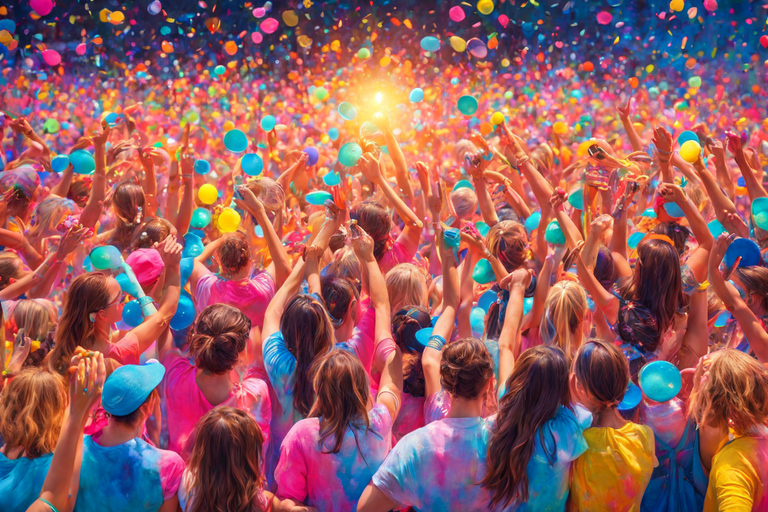
What does it mean to be Pansexual?
Being pansexual is a sexual orientation characterized by the potential for attraction to individuals regardless of their gender identity. Pansexuality differs from other sexual orientations in that it transcends traditional gender binaries, acknowledging that attraction can exist across a broad spectrum of gender expressions and identities.
Individuals who identify as pansexual are open to forming romantic, emotional, or sexual connections with people of any gender, including but not limited to male, female, non-binary, genderqueer, genderfluid, and more. The key defining feature of pansexuality is the emphasis on the person’s unique qualities and personality rather than being restricted by gender categories.
Pansexuality is often described as attraction to people based on the individual themselves, irrespective of their gender identity. This contrasts with other sexual orientations, such as bisexuality, which traditionally implies attraction to both men and women, though bisexuality can also be inclusive of attraction to non-binary individuals.
It’s important to note that the understanding and definition of sexual orientations, including pansexuality, can vary among individuals. The term is a self-identifying label, and individuals may use it to communicate their experiences of attraction and relationships in a way that feels authentic to them.
In essence, being pansexual means embracing a fluid and inclusive approach to love and attraction, recognizing that the spectrum of gender is diverse and that meaningful connections can be formed with individuals of any gender identity. Pansexuality contributes to the rich tapestry of human sexuality, highlighting the complexity and uniqueness of individual attractions beyond the constraints of traditional gender norms.

What are the different types of Pansexual people?
While pansexuality as a sexual orientation encompasses the potential for attraction to individuals across the entire gender spectrum, it’s important to recognize that people’s experiences of pansexuality can be diverse and nuanced. However, it’s crucial to understand that these variations are individual and not rigidly categorized. Here are some aspects to consider:
- Attraction to Various Gender Identities:
- Pansexual individuals may experience attraction to people of all gender identities, including but not limited to male, female, non-binary, genderqueer, genderfluid, and more.
- Preferences and Fluidity:
- Preferences and degrees of attraction can vary among pansexual individuals. Some may find themselves equally attracted to people of all genders, while others might experience fluctuations in their attractions over time.
- Romantic and Sexual Orientation:
- Pansexuality is inclusive of both romantic and sexual attractions. Some pansexual individuals may experience a difference between who they are romantically attracted to and who they are sexually attracted to.
- Intersectionality:
- Pansexuality intersects with other aspects of identity, such as race, ethnicity, culture, and religion. This intersectionality influences how individuals experience and express their pansexuality in the context of their broader identity.
- Self-Identification:
- How individuals identify within the pansexual spectrum can vary. Some may specifically identify as pansexual, while others may use terms like omnisexual or multisexual. It’s essential to respect individuals’ chosen labels and understand that language can be subjective.
- Relationship Dynamics:
- Pansexual individuals engage in a variety of relationship dynamics, including monogamous relationships, polyamorous relationships, or other forms of consensual non-monogamy. The type of relationship someone pursues is a personal choice and may not be directly related to their sexual orientation.
- Intersection with Other Identities:
- Pansexuality can intersect with other aspects of identity, such as being a part of the LGBTQ+ community. Individuals may navigate their pansexuality alongside other aspects of their identity, contributing to a rich and diverse spectrum of experiences.
It’s essential to approach discussions about pansexuality with sensitivity and respect, recognizing that individual experiences and expressions of this sexual orientation can vary widely. People’s feelings, attractions, and identities are unique and should be honored without imposing rigid categories or expectations.

Inclusivity and Representation
The Pansexual Pride Flag is a powerful symbol that embodies inclusivity and representation within the LGBTQ+ community. Its design and colors intentionally reflect the diversity of attractions associated with pansexuality, fostering a sense of visibility, acceptance, and unity among pansexual individuals. Here’s a closer look at how the Pansexual Pride Flag contributes to inclusivity and representation:
- Embracing the Gender Spectrum:
- The Pansexual Pride Flag, with its three horizontal stripes of pink, yellow, and blue, symbolically represents attractions across the gender spectrum. This inclusive design explicitly acknowledges that pansexuality transcends traditional gender binaries and includes attraction to individuals of all gender identities.
- Visibility and Recognition:
- Displaying the Pansexual Pride Flag at LGBTQ+ events, parades, and online platforms increases its visibility. This visibility is crucial in fostering recognition and understanding of pansexuality, both within the LGBTQ+ community and in society at large.
- Promoting Awareness and Education:
- The Pansexual Pride Flag serves as an educational tool, helping to inform people about the existence and experiences of pansexuality. By raising awareness, the flag contributes to dismantling stereotypes and promoting a more comprehensive understanding of diverse sexual orientations.
- Community Building:
- The Pansexual Pride Flag plays a significant role in community building. Its presence at Pride events and other gatherings provides a visual representation for pansexual individuals, creating a sense of community, shared identity, and mutual support.
- Intersectionality:
- The Pansexual Pride Flag intersects with other LGBTQ+ identities, highlighting the interconnectedness of diverse experiences within the community. This intersectionality contributes to a more comprehensive representation of the LGBTQ+ spectrum.
- Symbol of Pride and Empowerment:
- For pansexual individuals, the flag serves as a source of pride and empowerment. It symbolizes self-acceptance and encourages individuals to celebrate their identity openly, fostering a sense of belonging and self-affirmation.
- Encouraging Dialogue:
- The Pansexual Pride Flag sparks conversations about pansexuality and sexual orientation more broadly. It encourages open dialogue, questions, and discussions, contributing to a more inclusive and informed society.
In essence, the Pansexual Pride Flag goes beyond being a mere symbol; it is a catalyst for positive change, fostering inclusivity, representation, and understanding within the LGBTQ+ community and beyond. Its colors and design encapsulate the rich diversity of pansexuality, making it an essential emblem in the broader landscape of LGBTQ+ symbols.
Support and Resources
Support and resources are essential for individuals who identify as pansexual, as well as for those seeking to understand and ally with the pansexual community. Here are key areas of support and resources:
- LGBTQ+ Organizations:
- Numerous LGBTQ+ organizations provide support, information, and resources. Organizations like The Trevor Project, GLAAD, and PFLAG offer guidance and assistance for individuals exploring their sexual orientation and navigating various challenges.
- Online Communities:
- Joining online communities and forums specific to pansexuality can provide a sense of connection. Platforms like Reddit and LGBTQ+ forums often have dedicated spaces where individuals can share their experiences, seek advice, and find support.
- Counseling and Mental Health Services:
- Mental health is a crucial aspect of well-being. Seeking counseling or therapy from professionals who are LGBTQ+ affirming can offer support for individuals navigating their sexual orientation, relationships, or other aspects of their lives.
- Educational Resources:
- Accessing educational resources on pansexuality and LGBTQ+ topics can be empowering. Books, articles, and online resources provide information that helps individuals understand themselves better and communicate effectively with others.
- Alliance Groups:
- Joining LGBTQ+ alliance groups or Gay-Straight Alliances (GSAs) can create a supportive community within educational institutions or workplaces. These groups often organize events, discussions, and awareness campaigns.
- Local LGBTQ+ Centers:
- Many cities have LGBTQ+ community centers that offer a range of services, including support groups, counseling, and educational programs. These centers can be valuable resources for connecting with others and accessing information.
- Helplines:
- Helplines such as The Trevor Project (for LGBTQ+ youth) and the National LGBTQ+ Hotline provide confidential support and assistance. These services are staffed by trained professionals who can offer guidance and a listening ear.
- Healthcare Resources:
- Accessing LGBTQ+ affirming healthcare providers is important for overall well-being. Providers who are knowledgeable about LGBTQ+ health can offer inclusive and understanding care.
- Social Media and Online Campaigns:
- Following LGBTQ+ activists, organizations, and advocates on social media platforms can keep individuals informed about current issues, events, and resources. Online campaigns often highlight important topics and offer avenues for engagement.
- Legal and Rights Information:
- Familiarizing oneself with legal rights and protections is crucial. Understanding anti-discrimination laws and legal resources specific to LGBTQ+ individuals can empower individuals to assert their rights.
Empowering individuals with knowledge, fostering a sense of community, and providing access to support services are crucial aspects of creating an inclusive and affirming environment for pansexual individuals. Accessing these resources can contribute to personal growth, resilience, and a sense of belonging within the broader LGBTQ+ community.
Where to buy a Pansexual Pride Flag?
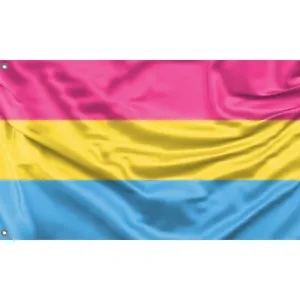
Buy pride flags on eBay
eBay has a large collection of HQ and affordable Pansexual Pride Flag!
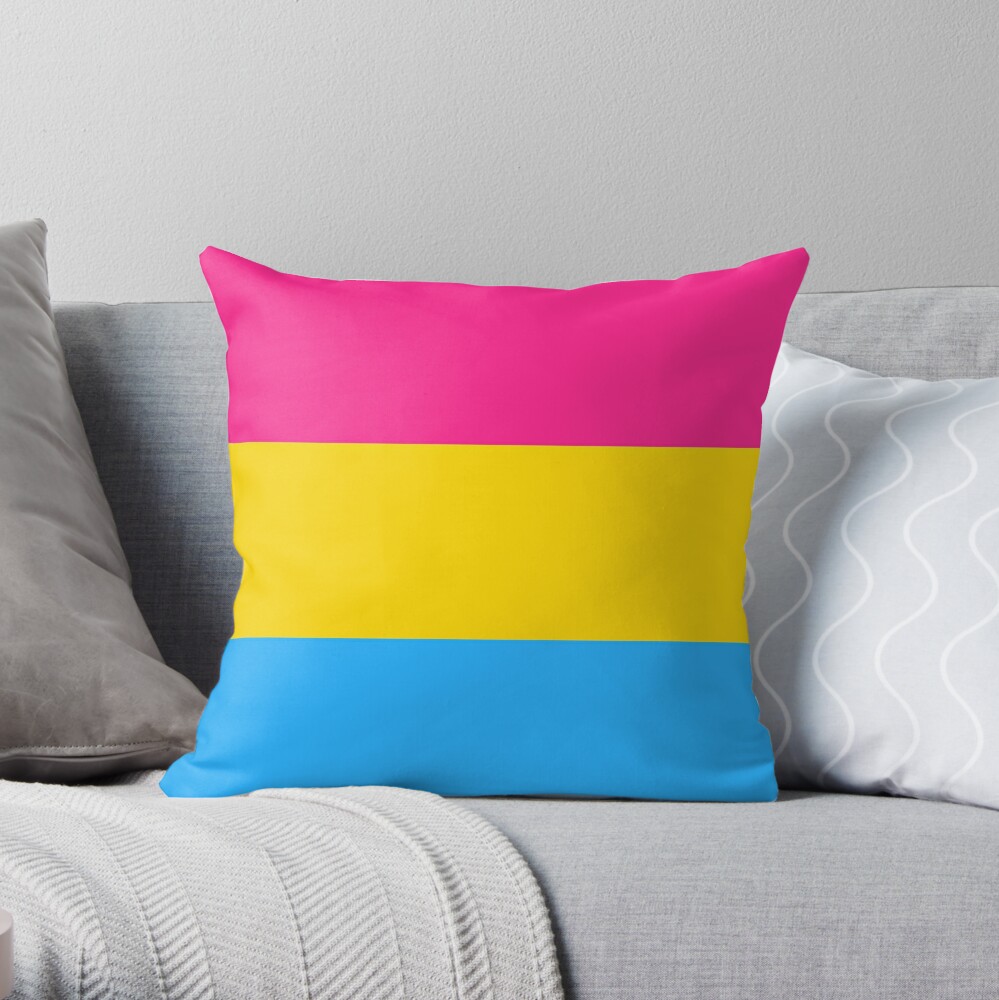
Buy products on Redbubble
Redbubble has a large collection of products with the Pansexual Flag, such as pillows, phone cases, T-shirts, mugs, hats, and much more!
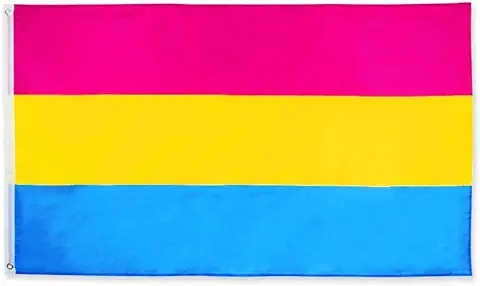
Buy on Amazon
Amazon has lots of Pansexual Flags!

Download the Pansexual Pride Flag.
Download as (10000×6000 px) PNG or SVG.
Can I use the downloaded flag for my personal projects? Yes you can, this flag is in the public domain and you can use it in whatever way you like.
How about commercial useage? The same, you can use it commercially and personally!
How do I know I am Pansexual?
Discovering and understanding one’s sexual orientation is a personal journey that can take time and self-reflection. If you’re questioning whether you might be pansexual, consider the following aspects and reflections:
- Attraction Across Genders:
- Pansexuality is characterized by the potential for attraction to individuals of any gender, including male, female, non-binary, genderqueer, and more. Reflect on your experiences of attraction and whether you find yourself drawn to people regardless of their gender identity.
- Emotional and Romantic Connections:
- Consider not only your sexual attractions but also your emotional and romantic connections. Pansexuality encompasses a spectrum of attractions beyond just the physical, acknowledging that romantic and emotional bonds can form with individuals of various gender identities.
- Fluidity and Openness:
- Pansexuality often involves an openness to attraction that transcends traditional gender categories. If you find that your attractions are fluid and not limited by gender, and you are open to connecting with individuals across the gender spectrum, this might align with pansexuality.
- Understanding and Acceptance:
- Explore your understanding and acceptance of different gender identities. Pansexuality involves recognizing and valuing the diversity of gender expressions. Reflect on whether you feel comfortable and accepting of a broad range of gender identities in the context of attraction.
- Experiences and Feelings:
- Consider past experiences and feelings. Reflect on the individuals you’ve been attracted to, your romantic relationships, and any patterns or consistencies you observe in your attractions.
- Exploration and Self-Discovery:
- Sexual orientation can be fluid, and it’s okay to explore your feelings over time. Give yourself the space to learn about your attractions and preferences without feeling pressured to label yourself immediately.
- Conversations and Support:
- Engage in conversations with friends, communities, or support groups. Sharing experiences and hearing from others who identify as pansexual can provide insights and perspectives that might resonate with your own feelings.
- Educate Yourself:
- Educate yourself about different sexual orientations, including pansexuality. Understanding the spectrum of human sexuality can provide context and help you articulate your own experiences.
- Consulting Professionals:
- If you find the process challenging, consider seeking support from mental health professionals, counselors, or LGBTQ+ affirming therapists. They can provide guidance and a safe space for exploration.
- Remember It’s Personal:
- Ultimately, the label you choose or don’t choose is a personal decision. You may identify as pansexual, another sexual orientation, or prefer not to label yourself at all. What matters most is being true to your feelings and understanding your own identity.
It’s important to approach self-discovery with patience and self-compassion. Understanding your sexual orientation is a journey that unfolds over time, and it’s okay if your understanding evolves. Embrace the process of self-discovery, and allow yourself the space to explore and articulate your feelings in a way that feels authentic to you.
Recommended books
Several books explore and address the experiences of Pansexual individuals, offering insights, narratives, and perspectives that can be both validating and enlightening. Here are some recommendations:
- “Stone Butch Blues” by Leslie Feinberg
This novel is a classic in LGBTQ literature and follows the life of a gender-nonconforming protagonist, exploring themes of identity and resilience.
- “Nevada” by Imogen Binnie
This novel centers around a transgender protagonist and delves into themes of self-discovery, identity, and the challenges of navigating a genderqueer existence.
- “Gender Outlaws: The Next Generation” edited by Kate Bornstein and S. Bear Bergman
This anthology features diverse voices within the LGBTQ community, including essays and narratives that encompass a wide range of gender identities and expressions. - “Genderqueer: Voices Beyond the Sexual Binary” edited by Joan Nestle, Clare Howell, and Riki Wilchins
This collection brings together personal narratives, essays, and poems that explore the experiences of genderqueer individuals, providing a rich and varied perspective. - “They/Them/Their: A Guide to Nonbinary and Genderqueer Identities” by Eris Young
A comprehensive guide that explores nonbinary and genderqueer identities, offering insights and information for those seeking to understand or navigate these experiences. - “Trans Bodies, Trans Selves” edited by Laura Erickson-Schroth
This resource covers a wide range of topics related to transgender and gender-nonconforming experiences, offering practical information and personal narratives. - “The ABC’s of LGBT+” by Ashley Mardell
Geared towards a younger audience, this book provides an accessible and informative guide to various aspects of the LGBTQ+ spectrum, including Omnisexuality. - “Trans Like Me: Conversations for All of Us” by C.N. Lester
C.N. Lester, a nonbinary activist, explores the complexities of gender identity in this thought-provoking book, combining personal experiences with broader discussions about gender. - “The Art of Being Normal” by Lisa Williamson
A fictional narrative that follows the lives of two transgender teens, this novel provides a relatable and engaging story that can resonate with individuals exploring their own identities. - “Beyond Magenta: Transgender Teens Speak Out” by Susan Kuklin
This book shares the stories of transgender and genderqueer teens, providing a platform for their voices and experiences.
These books cover a range of genres and styles, offering Pansexual individuals and those seeking to understand more about gender diversity a diverse and enriching reading list. It’s essential to explore various perspectives to gain a more comprehensive understanding of the fluidity and diversity within gender identities.

Educational content and resources:
Explore the following collection of resources and websites tailored to provide valuable support and information for individuals navigating Pansexual identities. Whether you are seeking community connections, educational materials, or assistance in understanding and expressing your gender identity, these platforms have been curated to offer a diverse range of perspectives and resources.
- Nonbinary.org
- Offers a wealth of information on nonbinary and genderqueer identities.
- GLAAD‘s Tips for Allies of Transgender People
- Provides guidance for allies of transgender and gender nonconforming individuals.
- Gender Diversity
- Offers resources and support for families and children exploring gender identity.
- National Center for Transgender Equality (NCTE)
- Advocacy organization working towards policy reform and transgender equality.
- The Trevor Project
- A crisis intervention and suicide prevention organization for LGBTQ+ youth.
- Transgender Equality
- Provides resources, policy advocacy, and educational materials.
- Genderqueer.me
- A resource hub with articles, stories, and information on genderqueer identities.
- Autostraddle’s “Queer Your Tech”
- A tech and culture column that often includes gender-related content.
- Trans Lifeline
- A crisis hotline and resource for transgender individuals.
- PFLAG
- Offers support and resources for LGBTQ+ individuals, their families, and allies.
- Gender Diversity: Beyond the Binary
- A TED Talk playlist featuring discussions on gender diversity.
- Human Rights Campaign (HRC)
- Advocacy and educational resources for LGBTQ+ rights.
- Pronouns.org
- Offers guidance on using and respecting personal pronouns.
- National LGBTQ Task Force
- Advocacy organization working towards justice and equality for LGBTQ+ individuals.
- The Agender Project
- A platform for sharing experiences and resources related to agender identities.
- The Queer Encyclopedia
- A comprehensive resource with entries on a wide range of LGBTQ+ topics.
- Astraea Lesbian Foundation for Justice
- A foundation supporting LGBTQ+ rights globally, including gender-related issues.
Conclusion

In summary, the Pansexual Pride Flag, crafted in 2010, stands as a vibrant testament to the inclusive nature of pansexuality. Comprising three horizontal stripes – pink for attraction to females, blue for males, and yellow for all genders – the flag beautifully symbolizes the fluidity of sexual orientation. Its presence at LGBTQ+ events, parades, and online platforms fosters visibility, community, and understanding, contributing to a more inclusive and diverse representation of love within the broader LGBTQ+ tapestry.

FAQs and Common Misconceptions

What does each color on the Pansexual Pride Flag represent?
The Pansexual Pride Flag consists of three horizontal stripes. The pink stripe represents attraction to those identifying as female, the blue signifies attraction to those identifying as male, and the yellow represents attraction to individuals across the gender spectrum, including non-binary and genderqueer individuals.
Who designed the Pansexual Pride Flag, and when was it created?
The Pansexual Pride Flag was designed by grassroots activists in 2010. Its creation was a collaborative effort within the LGBTQ+ community to establish a symbol that authentically represented pansexuality.
How is the Pansexual Flag used within the LGBTQ+ community?
The Pansexual Pride Flag is widely used in LGBTQ+ events, parades, and online platforms. Its presence fosters visibility and solidarity, allowing individuals to celebrate their pansexual identity and promoting inclusivity within the broader LGBTQ+ community.
Are there other related flags and symbols within the LGBTQ+ community?
Yes, there are various LGBTQ+ flags and symbols, such as the Rainbow Flag representing the broader community, as well as flags specific to different sexual orientations and gender identities, including the Bisexual Pride Flag and Transgender Pride Flag.
Can I create my own DIY version of the Pansexual Pride flag?
Absolutely! Creating a DIY Pansexual Pride Flag is a creative and personal way to express support for pansexuality. Be sure to incorporate the three horizontal stripes with the pink, yellow, and blue colors.
What is an example of Pansexuality?
An example of pansexuality is being attracted to individuals regardless of their gender identity. Pansexual individuals can experience romantic, emotional, and sexual attraction to people of all gender expressions.
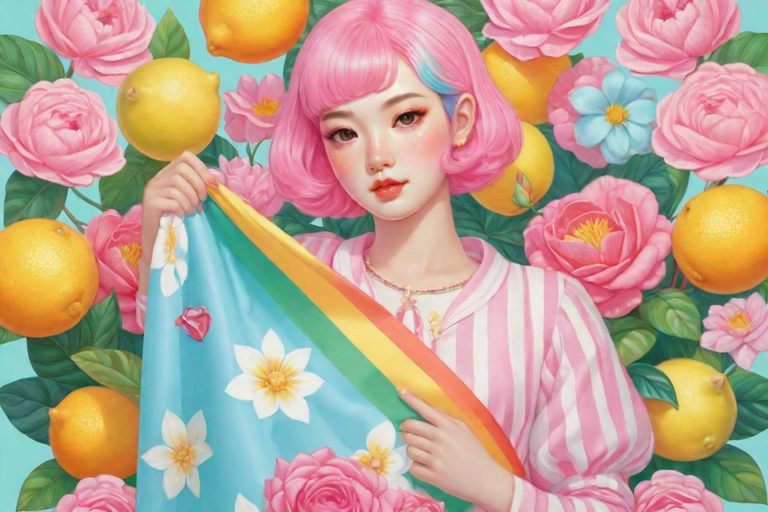
How has the Pansexual Pride Flag contributed to community acceptance and adoption?
The Pansexual Pride Flag has played a pivotal role in fostering acceptance by providing a visible symbol for the pansexual community. Its adoption in LGBTQ+ spaces has contributed to a sense of identity, community, and broader acceptance.
How can the Pansexual Pride Flag contribute to promoting equality and understanding?
The Pansexual Pride Flag promotes equality and understanding by raising awareness about pansexuality. Its visibility encourages conversations, educates the public, and contributes to dismantling stereotypes, fostering a more inclusive and understanding society.

Are there support networks and resources available for individuals exploring their gender identity?
Yes, there are numerous support networks and resources for individuals exploring their gender identity, including LGBTQ+ organizations, counseling services, and online communities that provide guidance, information, and a sense of community.
What are the different types of Pansexual Pride people?
Pansexual individuals may vary in their attractions, preferences, and experiences. While the core of pansexuality is attraction regardless of gender, individual expressions can be diverse and unique.
What is the Pansexual Pride Flag?
The Pansexual Pride Flag is a symbol representing the pansexual community, featuring three horizontal stripes of pink, yellow, and blue. Each color represents different aspects of attraction, emphasizing inclusivity across the gender spectrum.

What does the Pansexual Pride Flag mean?
The Pansexual Pride Flag symbolizes pansexuality and inclusivity. The pink stripe represents attraction to females, the blue to males, and the yellow to individuals across the gender spectrum, reinforcing the fluidity of sexual orientation.
What is the role of intersectionality in the LGBT and pansexual communities?
Intersectionality plays a crucial role in recognizing the multifaceted nature of individuals within the LGBT and Pansexuality communities. It highlights the interconnectedness of identities, such as race, gender, and sexual orientation, shaping unique experiences.
By understanding and addressing these intersections, these communities can work towards greater inclusivity, representation, and support for individuals facing diverse forms of discrimination and marginalization.
Are there specific pronouns I should use when referring to a Pansexual person?
Pronoun usage is individual and may not be related to one’s sexual orientation. Always ask and use the pronouns preferred by the individual, as they may identify with he, she, they, or other pronouns.
How does one come out as Pansexual?
Coming out as Pansexual is a personal choice. It involves sharing one’s sexual orientation with others when one feels comfortable. It can be done through open conversations, sharing experiences, or using various communication methods.
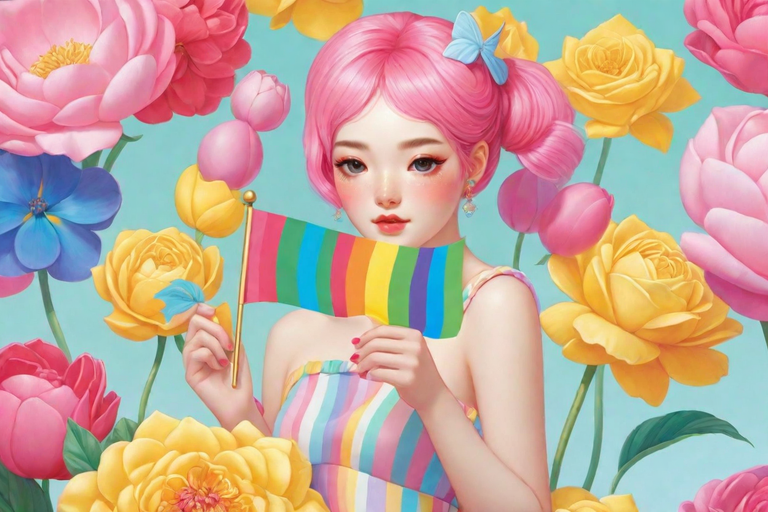
How can I be a supportive ally to someone who is LGBT or Pansexual?
Being a supportive ally involves listening, educating oneself about LGBTQ+ issues, using inclusive language, and offering understanding and acceptance. Creating a safe and affirming environment is crucial.
Is being transgender the same as being Pansexual?
No, being transgender refers to an individual’s gender identity, while Pansexuality relates to sexual orientation. Transgender individuals may identify with a gender different from the one assigned at birth, while Pansexuality pertains to attraction across genders.
What is the difference between Pansexual and non binary?
Pansexuality refers to a sexual orientation that is attracted to individuals of any gender, while nonbinary is a gender identity outside the traditional binary of male or female. They are distinct aspects of identity.
How to tell if i am Pansexual or Nonbinary?
Exploring one’s identity involves self-reflection. Pansexuality relates to attraction, while nonbinary refers to gender identity. Consider your feelings toward attraction and your sense of gender identity to determine where you align.
What is the difference between Pansexual and genderfluid?
Pansexuality is a sexual orientation, while genderfluidity is a gender identity that involves a fluid experience of gender. Pansexual individuals are attracted to people regardless of gender, while genderfluid individuals may experience a fluid sense of their own gender.
Is polysexual and pansexual the same?
Polysexuality and pansexuality both involve attraction to multiple genders. The difference lies in the scope: pansexuality is attraction regardless of gender, while polysexuality may involve attraction to some, but not necessarily all, gender identities.


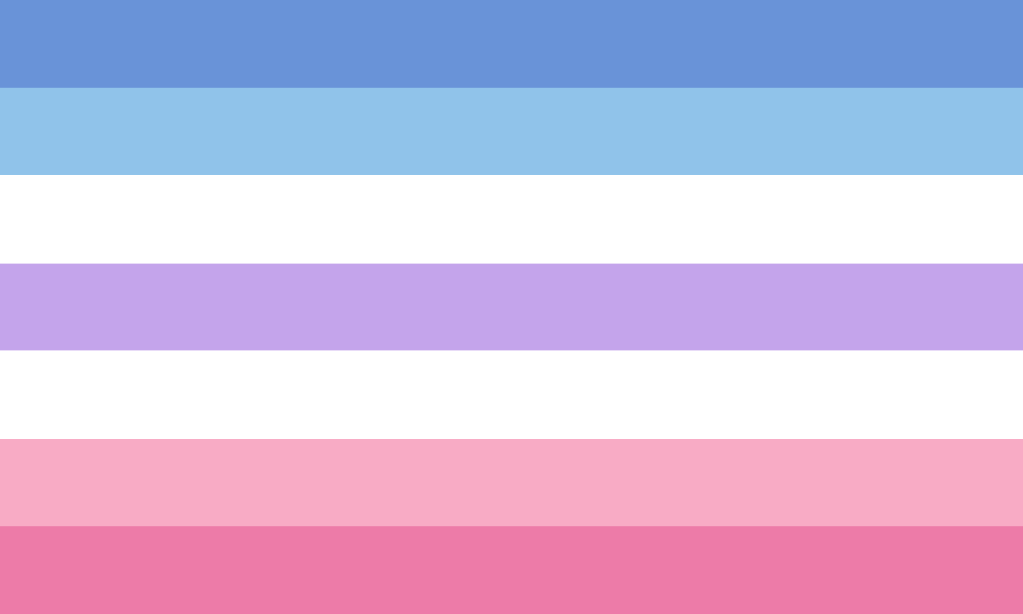


Leave a comment